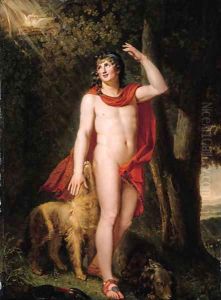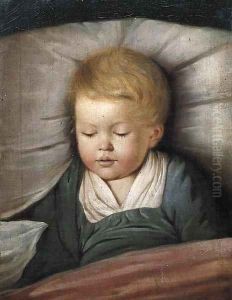Johann Heinrich The Younger Tischbein Paintings
Johann Heinrich Wilhelm Tischbein, known as Goethe Tischbein, was a notable German painter from the Tischbein family of artists. Born on February 15, 1742, in Haina, Germany, he was part of a dynasty of painters, engravers, and carpenters that significantly influenced the art world in Germany from the 18th to the early 19th century. Tischbein is particularly remembered for his association with Johann Wolfgang von Goethe, one of the titans of German literature, leading to his nickname. This relationship was emblematic of the intersection between the German literary and artistic movements of the time.
Tischbein’s early education in art came from his family, specifically trained by his uncle, Johann Heinrich Tischbein the Elder, who was a respected painter himself. His talent and ambition drove him to further his studies in Paris and then in Rome, where he deeply engaged with the Neoclassical style, which was predominant at the time. It was in Rome, during the 1780s, that he developed his friendship with Goethe, and in 1787, he painted his most famous work, 'Goethe in the Roman Campagna.' This portrait not only immortalized Goethe but also became an iconic image of the Weimar Classicism movement, reflecting the ideals of harmony, clarity, and classical beauty.
Throughout his career, Tischbein displayed a remarkable ability to capture both the physical likeness and the psychological complexity of his subjects, which ranged from the European aristocracy to prominent intellectuals. Besides his portraits, he also engaged in historical and mythological paintings, through which he explored themes of heroism, virtue, and the human experience, aligned with the Neoclassical ideals.
Despite his success, Tischbein’s life was marked by financial difficulties, partly due to the Napoleonic Wars and the changing tastes in art, which shifted towards Romanticism. He spent his later years as the director of the art academy in Kassel, Germany, where he continued to paint, teach, and influence the next generation of artists until his death on August 26, 1808. Tischbein's legacy is not only preserved in his diverse body of work but also in his influence on the development of Neoclassical painting in Germany and his role in documenting the intellectual and cultural milieu of his time.

